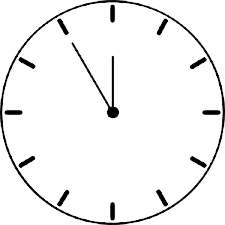Timer resolution plays a pivotal role in various systems and devices, ensuring precise timing for tasks ranging from software operations to hardware synchronization. Understanding the factors that affect timer resolution is crucial for optimizing performance and achieving desired outcomes. In this comprehensive guide, we delve into the intricacies of timer resolution and explore the key factors that influence it.
Table of Contents
What is Timer Resolution?
Timer resolution refers to the precision with which a system can measure time intervals. It determines the smallest unit of time a system can recognize and act upon. In computing, timer resolution is essential for scheduling processes, synchronizing events, and measuring performance.
Factors Affecting Timer Resolution
Hardware Architecture:
The hardware architecture of a system heavily influences its timer resolution. Components such as the CPU, motherboard, and system clock define the granularity of time measurement. Modern processors with high clock speeds and advanced timing mechanisms typically offer finer timer resolution than older hardware.
Operating System:
The operating system plays a significant role in managing timers and scheduling tasks. Different operating systems have varying timer resolution capabilities. Kernel-level functions and system calls determine how accurately the OS can handle time-related operations.
Device Drivers:
Device drivers facilitate communication between hardware devices and the operating system. They often include timer-related functionalities that impact timer resolution. Well-optimized device drivers can improve overall system performance by ensuring efficient timer management.
Software Applications:
Software applications running on a system can affect timer resolution through processing requirements and timing dependencies. Real-time applications, multimedia software, and gaming applications often demand precise timing, necessitating finer timer resolution for smooth operation.
System Load:
The overall system load, including CPU utilization, memory usage, and I/O operations, can influence timer resolution. High system loads may introduce latency and jitter, degrading timer accuracy. Optimizing system resources and task scheduling can mitigate these effects.
Power Management:
Power-saving features implemented at the hardware and software levels can impact timer resolution. Dynamic frequency scaling, sleep states, and interrupt handling mechanisms may affect the timing precision under different power modes.
Compiler Optimization:
Compiler optimizations can affect the efficiency of timing-sensitive code segments. Compiler flags, optimization levels, and target platform settings can influence how code is generated and executed, potentially affecting timer resolution in software applications.
Optimizing Timer Resolution
Achieving optimal timer resolution requires a holistic approach encompassing hardware, software, and system configuration. Here are some strategies to improve timer resolution:
Utilize High-Performance Hardware
Invest in modern hardware components with advanced timing capabilities to benefit from finer timer resolution.
Choose a Suitable Operating System:
Select an operating system with robust timer management capabilities tailored to your requirements.
Optimize Device Drivers:
Ensure device drivers are correctly optimized to minimize overhead and maximize timer accuracy.
Fine-Tune Software Applications:
Optimize software applications efficiently and minimize unnecessary timing dependencies to enhance timer resolution.
Manage System Load:
Implement strategies to balance system resources and minimize contention, ensuring consistent timer performance under varying loads.
Configure Power Management:
Adjust power management settings to balance energy efficiency and timer precision based on workload characteristics.
Optimize Compilation Settings:
Fine-tune compiler options to generate code optimized for timing-sensitive operations, improving overall timer resolution.
Conclusion:
Timer resolution is critical to system performance, influencing the accuracy and reliability of time-sensitive operations. By understanding the factors that affect timer resolution and implementing optimization strategies, you can enhance your system’s overall efficiency and responsiveness.
Whether you’re developing software applications, managing hardware devices, or configuring system settings, prioritizing timer resolution optimization can significantly improve performance and user experience.
